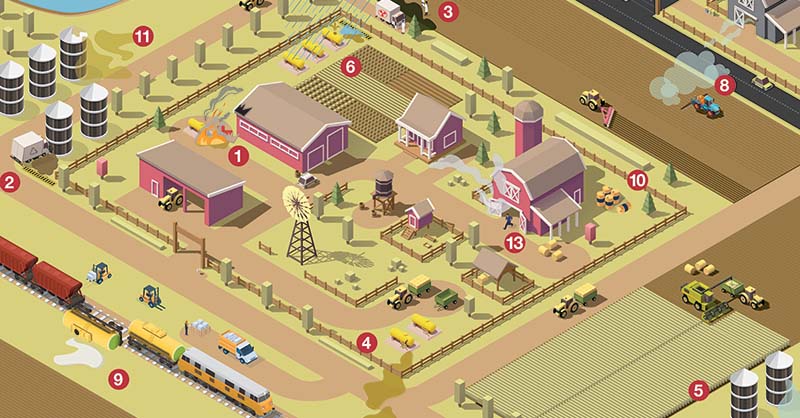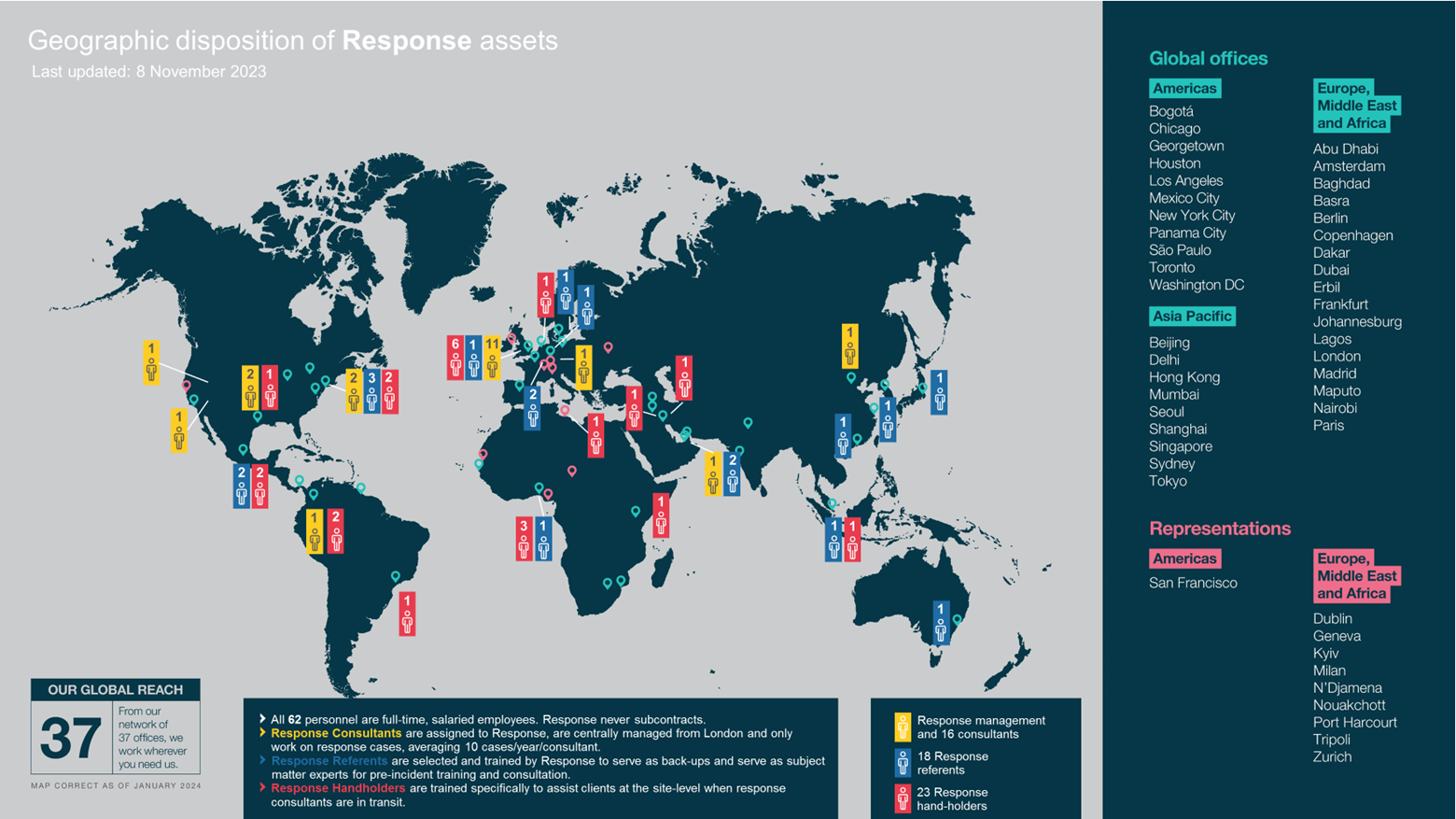Agriculture Riskopolis
We know the unique challenges that farm professionals of all kinds face in their line of work. Whether it is a chemical overspray or leaking aboveground storage tank, agriculture operation may pose an array of environmental exposures. The Agriculture Riskopolis showcases some of the environmental risks that could be detrimental to your clients’ businesses.
Can you spot the environmental risks hiding in the scene below? Take a closer look at each one by clicking on the numbers.

1. During a particularly heavy storm, heavy winds caused the roof of a barn uplift which knocked over aboveground fuel tanks and drums of fertilizer, resulting in the release of contents and subsequent fire which produced harmful smoke and fumes. The owner of the barn secured a farm pollution policy with Great American which provided clean-up and 3rd party bodily injury and property damage coverage, in addition to emergency response costs, all which mitigated the farmer’s pollution liability and helped restore farm operations.

2. A farm owner hired several employees to pick up and distribute waste to a nearby landfill. While in the midst of transporting the waste, the farm vehicle crashed and a container with unknown fertilizer product was released onto the ground and into a storm drain. The farm owner obtained a business auto policy which provided commercial automobile coverage for the vehicle damages; however, the unknown feeding substance caused a pollution condition which was not covered. Although the waste collection employee acted quickly to deploy the spill kit, some material still entered the receiving waterway. The release impacted both the soil around the vehicle and the adjacent storm drain. Emergency response expenses to vacuum out the storm drain and excavate impacted soils reached $110,000, neither of which were covered by the business auto policy. Transportation pollution liability coverage is available with a Great American farm pollution policy and designed to protect farmers when transporting product or waste.

3. A claim was made by the owners of a farm when a windstorm resulted in a large fuel spill affecting the area. Due to the severity of the spill, monitoring and testing of the contaminated groundwater and soil was required. A claim was later made for clean-up costs and partial business interruption as the processing facility was closed for four days as a result of the remediation efforts.

4. A local farm had several diesel tanks onsite to conveniently fuel their heavy-duty machinery and equipment. Unfortunately, the tanks holding the fuel were found to be leaking, leaving the owners of the farm liable for the extensive clean-up costs on their property as well as a neighboring property, since the fuel had migrated offsite.

5. A producer of soybeans sustained a large ammonia release when the piping on their aboveground storage tank failed. The release caused approximately 5,000 lbs. of liquid ammonia and additional vapor. As a result, clean-up costs were incurred and a number of residents within a neighboring facility complained of respiratory issues.

6. Fuel was being transferred between two aboveground storage tanks at a farm during a rainstorm. The transfer tank overfilled and the overfill alarm did not trigger. In addition, the secondary containment valve had been left open causing fuel and rainwater to escape the containment for several hours before the release was detected. The farm owner was held responsible for the costly storage tank clean-up.

7. A farmer was sued by a nearby residential development alleging that the fumes from the spread of manure and other herbicides and pesticides caused several tenants to suffer migraine headaches and other related health problems.

8. A local farmer had claims for property damage made against him for contracting services when the herbicide being used was over-sprayed onto a neighboring farm resulting in damage to the neighbor’s crops. A claim was made for the value of the damaged crops.

9. To service their agricultural needs, a local farm operated a cooperative (co-op) on site to store perishable products and to supply inputs for production, including fertilizers, fuel and machinery services. The farm operation used a nearby railway to transfer products and other resources to local vendors. While loading the bulk freight onto the rail, the tanker, which contained dairy substance, overturned and the liquid was released into the surrounding soil.
Did you know? 52 percent of rail freight loads consist of bulk commodities such as agriculture and energy products, automobiles and components, construction materials, chemicals, equipment and food. Releases such as dairy from a tanker are typically not thought of as a pollution condition; however, these types of spills can be hazardous for the impacted soil and groundwater. (Source: https://railroads.dot.gov/rail-network-development/freight-rail-overview)

10. The owners of a farm went into bankruptcy resulting in a local environmental agency hiring a remediation contractor to properly close the onsite co-op facility. It was determined that the owners had been improperly stockpiling drums in the back prior to the bankruptcy, requiring the contractor to arrange for shipping of the drums to an operating licensed facility.

11. A soybean producer found that the floating roof drain of an aboveground storage container failed and released the tank’s chemical contents into a creek nearby. A claim was made for clean-up costs.

12. A local water works department filed a lawsuit against farmers in the area, claiming that drainage from these farms acted as a conduit for fertilizer to move from the farm fields to waterways and contributed to high nitrate levels which resulted in algae bloom, causing fish kills and dead zones.

13. A contractor was hired to upgrade a system in a farm co-op facility. During installation, a failed valve system caused an ammonia leak. The release resulted in a toxic cloud of ammonia that caused respiratory distress to onsite workers and the evacuation of neighboring business. It is worth noting that both the onsite workers and employees were not covered under the pollution policy; therefore, the farm owner was held responsible for the defense of the bodily injury claims as well as numerous business interruption claims that were filed by surrounding tenants.















